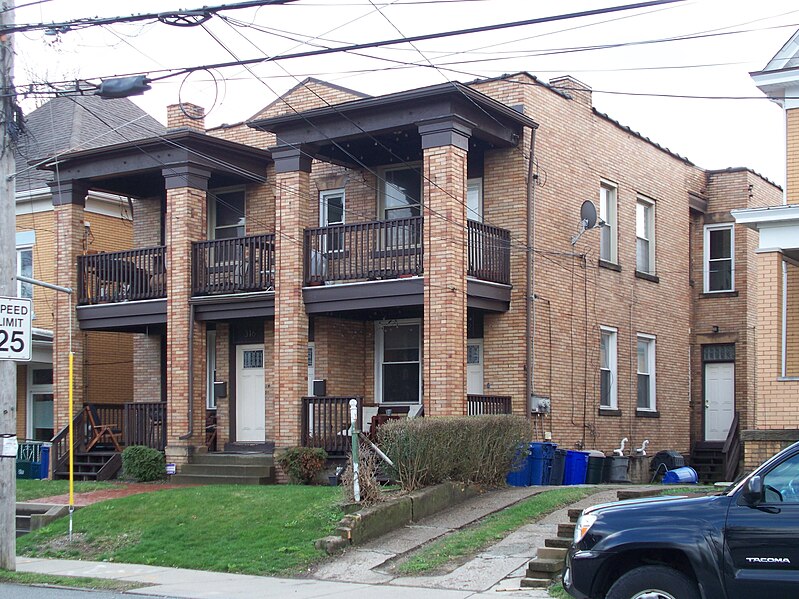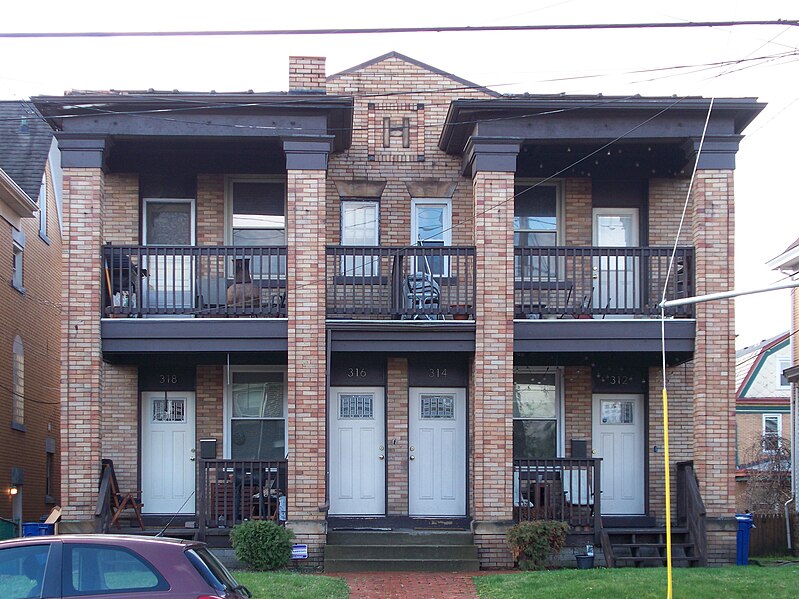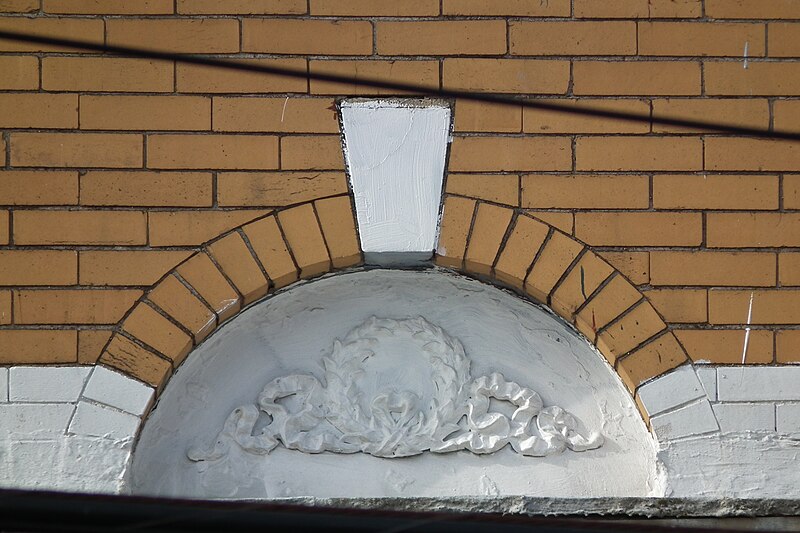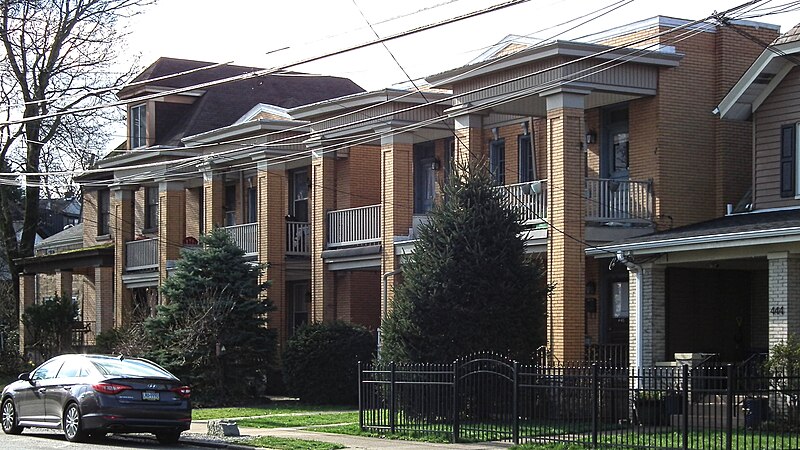
We saw the movie version yesterday, and now here are two still pictures of the vigorously moving Saw Mill Run at Seldom Seen.

And here is a picture of the path leading toward the Arch and the railroad viaducts:


We saw the movie version yesterday, and now here are two still pictures of the vigorously moving Saw Mill Run at Seldom Seen.

And here is a picture of the path leading toward the Arch and the railroad viaducts:


If you walk along Bailey Avenue on Mount Washington (a pleasant walk, by the way), you may notice some similar-looking apartment buildings scattered along the south side of the street. The double duplex above is one of them; we see it head on below.

You might also notice a distinctive ornament at the peak of the roofline:

Old Pa Pitt noticed it and made a not-too-outrageous guess that it was the initial of the owner. That turns out to be correct. These buildings were all owned by P. W. Hamilton, as we see on a 1923 plat map:

Here are two of them a few doors apart—the one we saw above, and this one:

These buildings have recently had a lot of spiffing up, and they look like very attractive places to live.

With these two doors open, we can see how, as is usual with Pittsburgh duplexes, the doors to the upstairs units lead straight to a stairway.
There are three of these double duplexes, all the same design. Then, as we come to the eastern end of the street, opposite Grandview Park, we find the same design on a larger scale:

It’s a double double duplex.



The H ornament is not here; instead we get little lunettes, one of them blank and one with a wreath ornament. But the building was owned by P. W. Hamilton, and its outline on the plat map shows how it is made by smashing two of the double duplexes together.



Formerly Grace Episcopal Church, this church was built in 1852 and “rebuilt” in 1926, according to the Pittsburgh History and Landmarks plaque. Father Pitt cannot say how much of the old building is left, but it would appear to have been a frame structure, which suggests that the current church was completely new in 1926. Regardless, the design is timeless; as soon as it was put up, it must have looked as if it had been there forever. The architect, again according to the plaque, was J. Stewart, Jr.
These pictures were taken back in October, when there were leaves.




Built in 1929, this church on Boggs Avenue is a fine example of the elegantly streamlined Gothic style that was fashionable for a few years before Gothic architecture disappeared entirely from our design vocabulary. It now belongs to a real-estate company, which uses it as offices but keeps the exterior well.
Perhaps you are thinking that this does not look very much like a Pittsburgh church, because there are no utility cables in front of it. Here:

That’s better.


A block or so away on the other side of Boggs Avenue is an older church, much altered but still recognizable:

Though it is festooned with artificial siding and expensive new brickwork, with a comically inappropriate broken pediment over the front door, this is clearly a church from the late 1800s. In fact it was built in 1884, as we can tell because whoever did the renovations was kind enough to place the old date stone in the new brick front:

And there is the name of the church: Evangelische Lutherische Zions Kirche, which is German for Zion Evangelical Lutheran Church. This is the original home of the congregation that later built the splendid Gothic edifice down the street.

You will note that this was one of those churches with the sanctuary upstairs; we have added yet another to our growing collection.